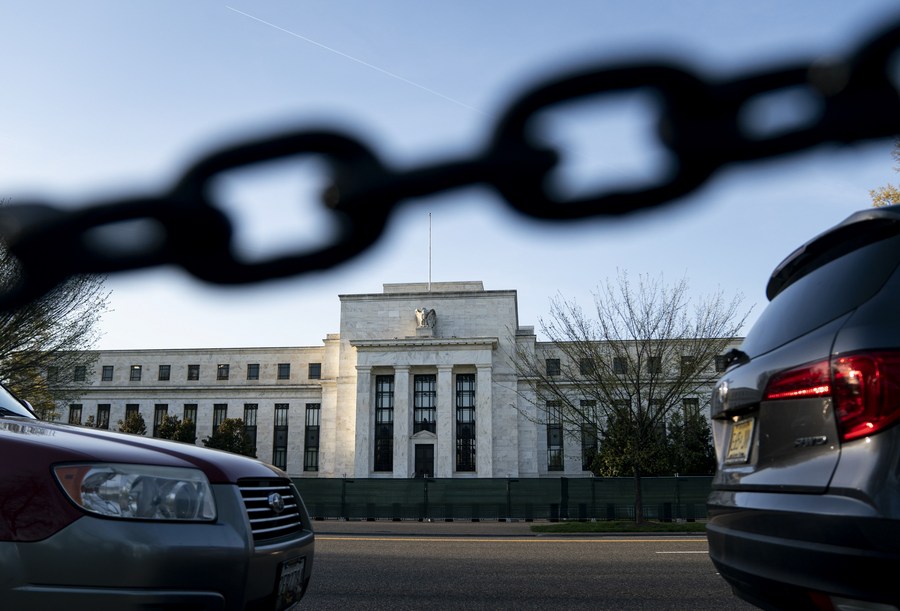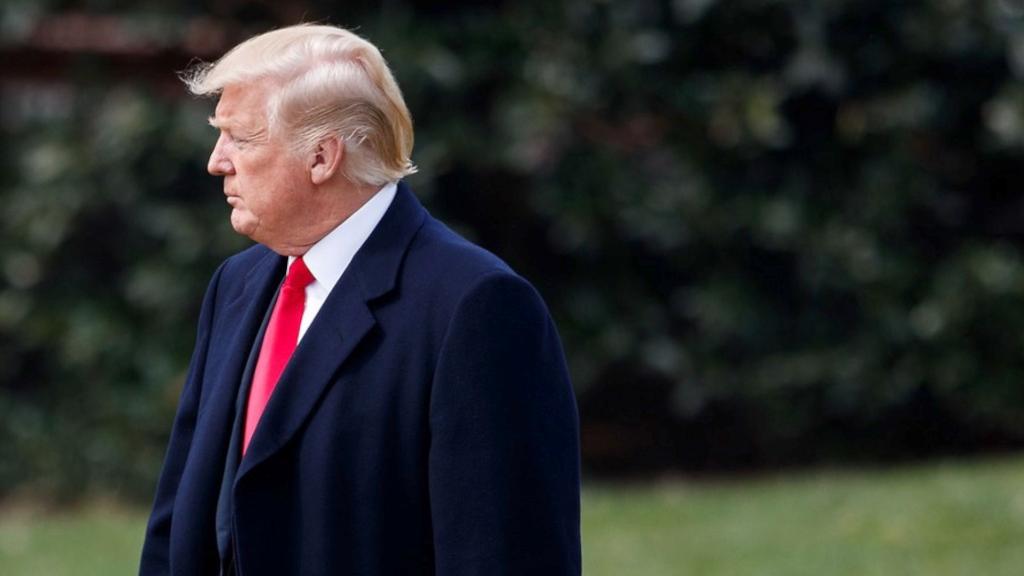* Given that the dollar is so embedded in the system of international transactions, the United States has turned it into a tool to bleed other countries by collecting seigniorage revenue.
* To boost its domestic economy, the United States often pumps excess money into global markets during periods of economic expansion, creating the illusion of a worldwide boom.
* Aggressive interest rate hikes have led to a global liquidity tightening, resulting in capital outflows and currency depreciation in emerging markets.
BEIJING, April 4 (Xinhua) -- The world is holding its breath for a simmering bank crisis in the United States triggered by the spectacular collapse of Silicon Valley Bank and Signature Bank.
Across the Atlantic, the repercussions are reverberating. As European banks, including Switzerland's Credit Suisse, edge closer to a similar crisis, concerns are growing that the regional crisis could become systemic.
The real culprit for the festering crisis is the U.S. Federal Reserve (Fed)'s monetary policy based on the U.S. dollar's hegemony, which has, on several occasions, plundered global wealth.

People queue up outside the headquarters of the Silicon Valley Bank (SVB) in Santa Clara, California, the United States, March 13, 2023. (Photo by Li Jianguo/Xinhua)
PLUNDERING WORLD WITH SEIGNIORAGE
After World War II, the United States deliberately established the dollar's hegemony.
In the third quarter of 2022, the dollar comprised nearly 60 percent of global foreign exchange reserves. In January 2023, the dollar accounted for about 40 percent of international payments.
Given that the dollar is so embedded in the system of international transactions, the United States has turned it into a tool to bleed other countries by collecting seigniorage revenue.
With a 100-dollar greenback that costs only about 17 cents to print, the United States could reap 100 dollars worth of goods and services from other nations.

This photo taken on March 16, 2023 shows a signage of Credit Suisse in Geneva, Switzerland. (Xinhua/Lian Yi)
Just as former French President Charles de Gaulle grumbled more than half a century ago, the United States enjoyed "exorbitant privilege" and "deficit without tears" created by its dollar and used its worthless paper note to plunder the resources and factories of other nations.
From the gold dollar, the petro dollar to the credit dollar, and now to the debt dollar, over the past decades, the world has been witnessing the basis of the dollar as an international currency weakening.
To salvage the dollar's hegemony, the United States has recklessly exhausted all military, finance and trade means, attempting to continuously export risks to and reap benefits from other countries through the lucrative dollar business.
CREATING GLOBAL ASSET BUBBLES
To boost its domestic economy, the United States often pumps excess money into global markets during periods of economic expansion, creating the illusion of a worldwide boom.
After the international financial crisis in 2008, the Fed introduced multiple rounds of quantitative easing.
Following the outbreak of the COVID-19 pandemic in 2020, it implemented "unlimited" quantitative easing, pushing global inflation to a 40-year-high, forming a colossal asset bubble and exacerbating risks to the world economy.
While the oversupply of U.S. dollars has brought "inflationary pressures not seen in a generation" to the United States, other economies were hit harder. In February, annual inflation in Argentina breached the 100 percent mark for the first time since 1991.

This photo taken on March 13, 2023 shows the exterior view of a First Republic Bank branch in Millbrae, California, the United States. (Photo by Li Jianguo/Xinhua)
Most of the excess dollars are exported to other countries through imports and overseas investment, allowing the United States to harvest the wealth of other countries at nearly zero cost.
The oversupply of the dollar also creates "irrational prosperity" that deviates from the actual economic situation and exacerbates the turmoil in the global financial market.
More economists are wakening up to the detriments of the current dollar-based monetary system.
The current dollar-centered monetary system does not reflect the dynamic global market, said David E. Sumual, chief economist of Bank Central Asia, the largest privately-owned bank in Indonesia, noting that sudden policy changes of the Fed always cause volatility in other countries.
But the Fed will continue to manipulate global markets and wreak havoc on the world economy, so long as other countries don't cut their reliance on the dollar.
Analysts have warned that the Fed had driven up asset bubbles worldwide to an extremely dangerous level, and the first signs of those bubbles bursting are beginning to appear.
After years of frothy markets, real trouble is on the horizon.
EXACERBATING GLOBAL DEBT RISKS
While the Western banking industry is teetering on edge of catastrophe, the Fed shows no signs of stopping its rate hikes.
Since March last year, the Fed has raised interest rates nine times in a row, with a cumulative rate hike of 475 basis points. The U.S. interest rate now stands at the highest level since September 2007.

This photo taken on April 20, 2022 shows the U.S. Federal Reserve in Washington, D.C., the United States. (Xinhua/Liu Jie)
Aggressive interest rate hikes have led to a global liquidity tightening, resulting in capital outflows and currency depreciation in emerging markets.
According to data from the International Monetary Fund (IMF), the pressure on debt repayment for countries denominated in the dollar has increased sharply. More than 60 percent of low-income countries are already at high risk of or in debt distress.
If the past is any indication, once a country falls into debt distress, its assets would be exposed to U.S. plundering.
In 1998, when asked can the United States weather Asia's financial storm, Jeffrey E. Garten, then the dean of the Yale School of Management, said that "big American firms ought to stay the course in Asia, taking advantage of unprecedented opportunities to buy assets cheaply in industries that have been closed to significant foreign investment."
Garten's words became a prophecy later fulfilled, and similar scenarios of U.S. capital pouncing on industries in vulnerable economies have played out repeatedly.
As the Fed flip-flops on its monetary policy, the United States also suffers temporary economic pain. Still, with its hegemonic currency, Uncle Sam can shuffle the risks to others and emerge largely unscathed from a crisis it started.
After the global financial crisis of 2008, it took the European Union 13 years to return GDP per capita to its pre-crisis level, while it only took the United States two years to do so.
Despite a brief jolt, the United States continues to plunder the world.
However, the abuse of the dollar, the weaponization of global financial infrastructure and the country's irresponsible monetary policy are backfiring and eroding the U.S. credibility.
According to data from the IMF, the dollar's share within the global reserves fell by more than 10 percentage points compared with 20 years ago. The declining trend shows no sign of ending. (Video reporters: Sun Lei, Guruh Riyanto, Wayan Agus, Yu Fuqing, Yang Yiran, Huang Zemin; video editors: Wu You, Luo Hui, Yu Jiaming)■












